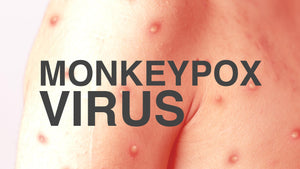
The Good and Bad of Non-dissolvable Sutures
A surgical suture is one of the most common medical devices used by doctors during surgeries. The suture helps to hold body tissues together after surgery or an injury. The application of a suture essentially involves the use of a needle along with an attached thread. Doctors have access to a wide variety and types of surgical sutures of different sizes, shapes, and thread materials.
Major classification among suture is absorbable and non-absorbable sutures. As the name suggests, dissolvable sutures are metabolised or are broken down naturally and harmlessly in the body. Whereas, Non-dissolvable sutures are made of materials which are not metabolised by the body. These sutures are either permanently implanted in the body or are removed once the wound is healed.
Non-dissolvable sutures are made up of special silk or synthetics like polyester, polypropylene or nylon. Non-absorbable sutures may or may not include coatings that enhance their performance characteristics and are typically used to close skin wounds. These sutures are typically used in heart surgeries like vascular anastomosis procedures (due to the constant movement and pressure on the heart). Non-absorbable sutures usually cause less scarring since they provoke a much lower level of immune response. That is why they are also used in surgeries where the cosmetic outcome is significant. These sutures may be left in permanently or removed after a while, depending on the intensity of the wound.
Advantages and Disadvantages of Non-absorbable sutures:
It is easy to handle, has excellent knot-tying properties and is very unlikely to cause an allergic reaction in the patient. While it's considered to be a non-absorbable, silk sutures, do degrade in about two years. Its soft structure is comfortable for patients and makes it gentle on delicate tissues.
Non-absorbable sutures remain in place forever as long as they are not removed. In general and visceral surgery, they are still used for skin closure. It is assumed that the cosmetic result is superior since the immune response is lower. At any rate, they are cheaper and easier to remove.
More evidence-based is the use of non-absorbable sutures in highly dynamic anatomical regions. Hernia repair (groin, scar, hiatal hernia) is a classic example.
On the downside, material like silk tends to become infiltrated with the cells it is suturing, making it difficult and painful to remove. However, it is coated with silicone or specialty wax to limit capillarity. Silk also has low tensile strength, making it likely to break under high tension. It's often used to suture mucosal tissues or to close Intertriginous areas. Because of its easy handling, silk is also helpful as a temporary suture during surgery.
Selection of suture depends primarily on the location, depth, and nature of the wound. Surgeons and doctors assess multiple parameters before selecting the suture type while closing the wound.
You can find a wide range of sutures and avail bulk discounts on sutures at - https://www.smartmedicalbuyer.com/collections/healthium-sutures-india.







